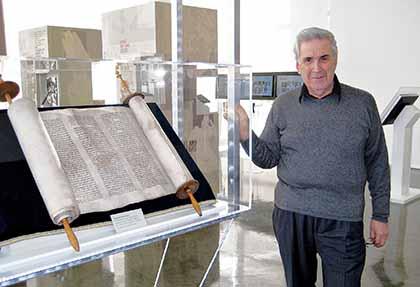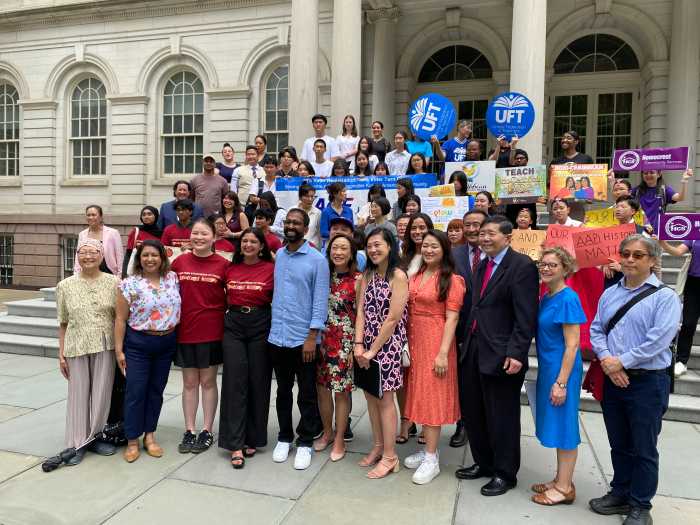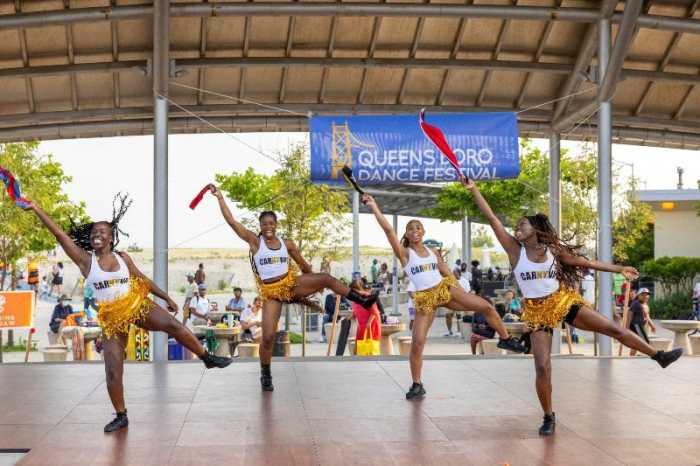By Anna Gustafson
The disturbing images portrayed in the exhibit at the Kupferberg Holocaust Resource Center at Queensborough Community College of a Nazi summer camp and people saluting flags with a swastika printed on them seem like they should be from Germany in the 1930s.
Instead, they were from places like Long Island and Madison Square Garden in Manhattan.
“When people think about the Holocaust, they’ll remember the Nuremberg trials or the Warsaw ghetto, but many don’t know about this, that there was Nazi activity right here in New York,” said Arthur Flug, the executive director of the Harriet and Kenneth Kupferberg Holocaust Resource Center and Archives at Queensborough Community College in Bayside. “In 1937, if you drove out to Yaphank, there was a Nazi camp. In 1937, the Nazis were friendly with America. We had good trade relations. There was a large German population here.”
“Goose Stepping on Long Island: Camp Siegfried,” the title of the Queensborough exhibit that runs through the end of January, brings to life a part of American history rarely discussed and shows photos of places like the Nazi camp that was run by the German-American Bund in Yaphank, L.I. The camp, which brought thousands of people from around the New York area to Long Island, taught Nazi ideology. In Yaphank in the 1930s, there were streets named after such Nazi leaders as Adolf Hitler and Joseph Goebbels.
There are photos of a massive pro-Nazi rally at Madison Square Garden in 1939, individuals hoisting a large sculpture of a swastika in a California park and an invitation to a celebration for Adolf Hitler’s birthday on 86th Street in Manhattan.
Flug pointed out a replication of a frightening street poster from San Francisco with anti-Jewish propaganda in the exhibit. The poster stated, “Heil! Heil! All Germans and Aryans of Pure Nordic Blood! We have the Jews on the run! Let us keep up the good work!” The poster goes on to list theaters people should not attend because they showed films with “Jews or Jew lovers.”
“Nazism wasn’t only a Germany story but an American one, too,” Flug said, reading from a sign hung in the exhibit in the center, which is on the Queensborough campus at 222-05 65th Ave. in Bayside.
Rabbi Isidoro Aizenberg, who assembled the exhibit, said he was astonished to learn that not that long ago there had been a Nazi camp on Long Island. He noted the area now is a peaceful residential area — a place that gives away no clue it once housed a camp that promoted Nazi propaganda.
“I hope this shows people we should always be on guard to the fact that hatred can sprout in the most unlikely places,” said Aizenberg, who was the rabbi of the Conservative Synagogue of Jamaica Estates from 1974 to 2004. “Here you have a little town in the woods and yet something like this could take root.”
Aizenberg will organize the next Kupferberg exhibit expected to open this spring, “Music in Hell,” which will include information about orchestras in concentration camps.
Reach reporter Anna Gustafson by e-mail at agustafson@cnglocal.com or by phone at 718-260-4574.



































